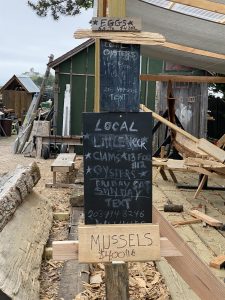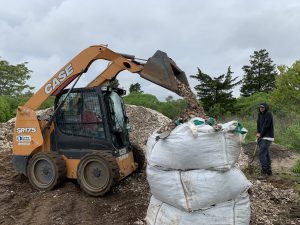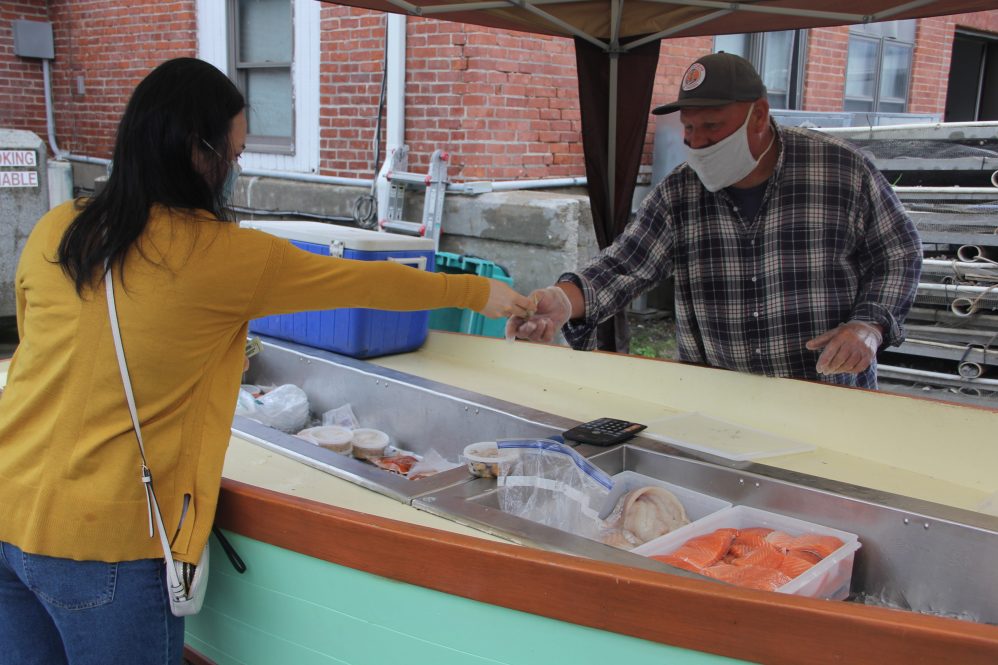When the COVID-19 pandemic forced the world to a halt in March 2020, the team at Connecticut Sea Grant helped get Connecticut shellfish farmers’ crews back to work and diversify their businesses to adapt the unprecedented challenges.
The pandemic shutting restaurants down had a massive impact on shellfisheries as almost all their business comes from selling fresh shellfish directly to restaurants.
“Their businesses were basically shut down overnight,” Tessa Getchis, senior extension educator at Connecticut Sea Grant, says. “The industry was in crisis mode.”
According to data Connecticut Sea Grant collected, in the first few weeks of the pandemic, Connecticut’s 51 businesses lost 93% of their revenue.
Before the pandemic, Connecticut Sea Grant was working on developing guidance and regulations for shellfisheries to sell directly to consumers with the Connecticut Department of Agriculture’s Bureau of Aquaculture.
When COVID-19 hit, the two agencies were able to fast-track the rollout of this guidance. This allowed shellfish farmers to diversify their businesses. Connecticut was the first state in the northeast to allow direct to consumer shellfish sales during the pandemic.
“For years we’ve been developing those relationships, for years we’ve been developing those forward-looking plans,” Sylvain De Guise, director of Connecticut Sea Grant, says.

A grant from the National Oceanic and Atmospheric Administration allowed Sea Grant to purchase nine portable refrigeration units. Shellfish farmers could put their wares into these units and bring them to farmer’s markets, for example, or set them up on their docks to keep the food at safe temperatures.
As the pandemic eased and restaurants reopened, in addition to selling to restaurants again, many shellfisheries have continued selling directly to consumers.
“It’s exciting to see people totally change their business model,” Getchis says. “A small grant can make a big difference.”
Connecticut Sea Grant and the Bureau also worked together to obtain funding from the National Sea Grant Program and the NOAA CARES Act to employ shellfishing crews to restore damaged oyster beds. Shellfishing crews are specially trained to catch shellfish; these same skills allowed them to restore the beds they rely on.
“They depend on the beds,” Getchis says. “So they were very motivated to do the restoration work. They see the value in enhancing them, restoring them.”
The beds along the Connecticut coastline where oysters breed and grow, provide vital habitat for baby oysters as well as many other marine plants and animals. They also help filter water, improving its clarity and quality, and prevent shoreline erosion.

During recent storms, some of these beds were buried in river sediment suffocating the oysters.
The shellfishing crews worked to uncover the beds and replenish them with healthy adult brood stock oysters and oyster shells, which baby oysters often attach to as they develop their own.
So far, this effort has restored more than 1800 acres of oyster beds.
Getchis says Connecticut Sea Grant recently obtained additional funding to continue this work using a more organized approach to determine the most efficient way to restore the beds. Industry partners and divers from the NOAA Northeast Fisheries Science Center’s Milford Lab will be collaborating on the project.
Researchers at Connecticut Sea Grant collected data on the economic impact the pandemic had on shellfisheries to help inform national emergency relief measures. The Connecticut Sea Grant team also helped shellfish farmers navigate federal funding applications during the pandemic.
Within the first year of the pandemic, the funding supported 33 businesses in the state. In the next few years, their work would benefit all 51.
Sea Grant was in a particularly good position to help the industry given their preexisting relationships with the community and state agencies, De Guise says.
“There’s tremendous value in having a presence in the community and listening in a non-regulatory, non-advocacy manner to build trust in the program,” De Guise says.
This work was supported by the National Oceanic and Atmospheric Administration (NOAA), the National Sea Grant Office, the NOAA CARES (Coronavirus Aid, Relief, and Economic Security) Act, the USDA CARES Act, and the CT CARES Act.
The Connecticut Sea Grant College Program (CTSG) is part of the National Sea Grant College Program network, administered by the National Oceanic and Atmospheric Administration (NOAA). CTSG is based at UConn’s Avery Point campus in Groton, and several staff members have academic appointments in the College of Agriculture, Health and Natural Resources, including UConn Extension. For more than 30 years, CTSG has worked to foster the wise use and conservation of coastal and marine resources of Long Island Sound and beyond through research, outreach and education. It is science serving the coast!



